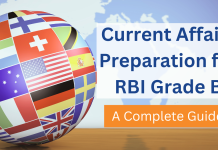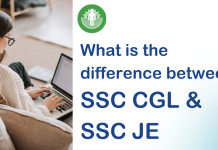How do governments steer their economies and achieve important economic objectives? What tools do they have at their disposal? When it comes to managing the economy, governments rely on two key tools: monetary policy and fiscal policy. These policies play a crucial role in shaping the economic landscape and are instrumental in maintaining stable prices, low unemployment rates, and sustainable economic growth. In this blog post, we will delve into the nuances of monetary policy and fiscal policy, exploring their differences, implementation processes, and the profound impact they can have on the overall economy.
Overview: Comparison of Monetary Policy and Fiscal Policy
Here’s a table comparing Monetary Policy and Fiscal Policy:
| Criteria | Monetary Policy | Fiscal Policy |
| Definition | The control of the money supply and interest rates by a central bank to achieve macroeconomic objectives. | The use of government spending and taxation to influence the economy and achieve specific economic goals. |
| Authority | Central Bank (e.g., Federal Reserve in the U.S.) | Government (e.g., Congress and the President in the U.S.) |
| Tools | 1. Open market operations 2. Discount rate 3. Reserve requirements | 1. Government spending 2. Taxation |
| Implementation Timeframe | Relatively quick; can be adjusted frequently. | Often has a longer implementation timeframe due to legislative processes and budget cycles. |
| Effect on Aggregate Demand | Indirect; influences interest rates and borrowing, affecting consumption and investment. | Direct; can lead to changes in consumption and investment through changes in disposable income and government spending. |
| Flexibility | High; can be adjusted quickly in response to changing economic conditions. | Lower; changes in fiscal policy may take time due to legislative processes and political considerations. |
| Control over Specific Sectors | Limited; affects the economy broadly through interest rates. | Potentially more targeted; can allocate spending to specific sectors or programs. |
| Inflation Control | Indirectly influences inflation through its impact on aggregate demand and economic activity. | Can be used to directly control inflation by adjusting spending and taxation. |
| Effect on Government Debt | Generally does not directly contribute to government debt. | Can contribute to government debt if spending exceeds revenue, leading to budget deficits. |
| Independence | Central banks are often independent to avoid political influence. | Subject to political processes and decisions; may be influenced by political considerations. |
Monetary Policy
Monetary policy refers to the actions taken by a central bank or monetary authority to manage the money supply and interest rates in the economy. Central banks, such as the Federal Reserve in the United States or the European Central Bank in Europe, use monetary policy to control inflation, stimulate economic growth, and stabilize the financial system.
Tools of Monetary Policy
One of the primary tools of monetary policy is adjusting interest rates. By raising or lowering interest rates, central banks can influence borrowing costs for businesses and individuals. When interest rates are low, businesses are more inclined to invest and consumers are more likely to borrow and spend, which can stimulate economic activity. On the other hand, when interest rates are high, borrowing becomes more expensive, which can help to curb inflationary pressures.
Another tool utilized by central banks is open market operations. This involves buying or selling government securities in the open market to influence the quantity of money in circulation. When the central bank buys government securities, it injects money into the economy, making borrowing easier and increasing spending. Conversely, when the central bank sells government securities, it reduces the money supply, making borrowing more difficult and reducing spending.
Central banks also have the option to adjust reserve requirements for commercial banks. By increasing or decreasing the reserve requirements, central banks can influence the amount of money that commercial banks can lend out to borrowers. When reserve requirements are lowered, banks can lend out more money, which can stimulate economic activity. Conversely, when reserve requirements are increased, banks have less money available for lending, which can have a tightening effect on the economy.
Examples of Monetary Policy
To illustrate the impact of monetary policy, let’s take a look at an example. During a period of economic recession, a central bank may choose to lower interest rates. This can make it cheaper for businesses to borrow money for expansion or investment. With reduced borrowing costs, businesses may be more inclined to hire new employees and invest in new projects, thus stimulating economic growth.
Additionally, let’s consider the use of open market operations by central banks. If the central bank buys government securities in the open market, it injects money into the economy. This increase in the money supply can lead to lower interest rates, making borrowing more attractive for businesses and consumers. This, in turn, can increase spending and investment, stimulating economic activity.
Fiscal Policy
Fiscal policy, on the other hand, relates to the government’s decisions regarding taxation and spending. Unlike monetary policy, which is controlled by the central bank, fiscal policy is determined by the executive and legislative branches of government. Fiscal policy can be expansionary, aimed at stimulating the economy, or contractionary, aimed at slowing down economic growth to curb inflation.
Tools of Fiscal Policy
One approach to expansionary fiscal policy is reducing taxes. By lowering tax rates, individuals and businesses have more disposable income, which can lead to increased spending and investment. This, in turn, can stimulate economic growth. Another approach is increasing government spending on infrastructure projects, education, healthcare, or other areas. This injects money into the economy, creating jobs and increasing demand for goods and services.
On the other hand, contractionary fiscal policy involves raising taxes and reducing government spending. Higher taxes reduce disposable income, leading to lower consumption and investment. Cutting government spending can also have a similar effect, as it reduces the demand for goods and services in the economy.
Examples of Fiscal Policy
To better understand the impact of fiscal policy, consider the example of a government implementing an expansionary fiscal policy during an economic downturn. The government may decide to lower taxes for individuals and businesses, allowing them to keep more of their income. With increased disposable income, individuals are likely to spend more, and businesses may invest in new equipment or expand their operations. Additionally, the government may also increase spending on public infrastructure projects, which would create jobs and further boost economic activity.
Conversely, consider a government implementing a contractionary fiscal policy to reduce inflationary pressures. The government may raise taxes on certain goods or services, which can dampen demand and lower consumption. Additionally, the government may also cut spending on non-essential areas, reducing the overall level of government expenditure in the economy.
The Relationship Between Monetary and Fiscal Policy
While monetary policy and fiscal policy are distinct, they are interconnected and often work in tandem to achieve desired economic outcomes. For example, during an economic downturn, the central bank may lower interest rates to stimulate borrowing and spending. At the same time, the government may implement expansionary fiscal policy, such as tax cuts or increased spending, to boost aggregate demand and support economic recovery.
However, there can also be conflicts between monetary and fiscal policy. For instance, expansionary fiscal policy, such as large-scale government spending, can lead to inflationary pressures. In such cases, the central bank may respond by raising interest rates to curb inflation, even if it could potentially slow down economic growth. Similarly, contractionary fiscal policy, such as austerity measures aimed at reducing government debt, may result in a decrease in aggregate demand. In response to this, the central bank may lower interest rates to stimulate economic activity.
Impact on the Economy
Both monetary policy and fiscal policy can have significant impacts on the economy.
Monetary policy can influence interest rates, which affect borrowing costs and the availability of credit. Lower interest rates can stimulate economic activity by making borrowing cheaper, encouraging businesses to invest and consumers to spend. Conversely, higher interest rates can help to control inflation but may also dampen economic growth.
Fiscal policy, on the other hand, can directly affect the income and spending of households and businesses. Tax cuts can increase disposable income, leading to higher consumption and investment. Increased government spending can create jobs and boost demand in the economy. Conversely, higher taxes and reduced government spending can lower consumption and investment, potentially slowing economic growth.
The combination of monetary policy and fiscal policy can have a multiplier effect on the economy. When both policies are expansionary, with lower interest rates and increased government spending, the impact on the economy can be amplified. This can lead to higher levels of consumption, investment, and overall economic growth.
On the other hand, when both policies are contractionary, with higher interest rates and reduced government spending, the overall impact on the economy can be negative. Higher borrowing costs and reduced public expenditure can result in lower levels of consumption, investment, and economic activity.
Conclusion
Monetary policy and fiscal policy are vital tools used by governments to manage the economy. While monetary policy is implemented through actions taken by the central bank, fiscal policy is determined by the government. Both policies can have significant impacts on interest rates, aggregate demand, inflation, and economic growth. Monetary policy, through tools such as interest rate adjustments and open market operations, can influence borrowing costs and the availability of credit. This, in turn, can stimulate or restrain economic activity.
Fiscal policy, through tools such as tax adjustments and government spending, can directly impact the income and spending of households and businesses. This can lead to changes in consumption, investment, and overall economic activity. It is important for governments to carefully consider the use of both monetary and fiscal policy in order to achieve their economic objectives. Understanding the differences between these two policy tools and their potential impact on the economy can help in making informed decisions that promote long-term economic stability and growth.
Get Free Online Test Series, GK updates in form of Beepedia, BeeBooster, as well as latest updates for Bank PO, Bank Clerk, SSC, RBI, NABARD and Other Government Jobs.















